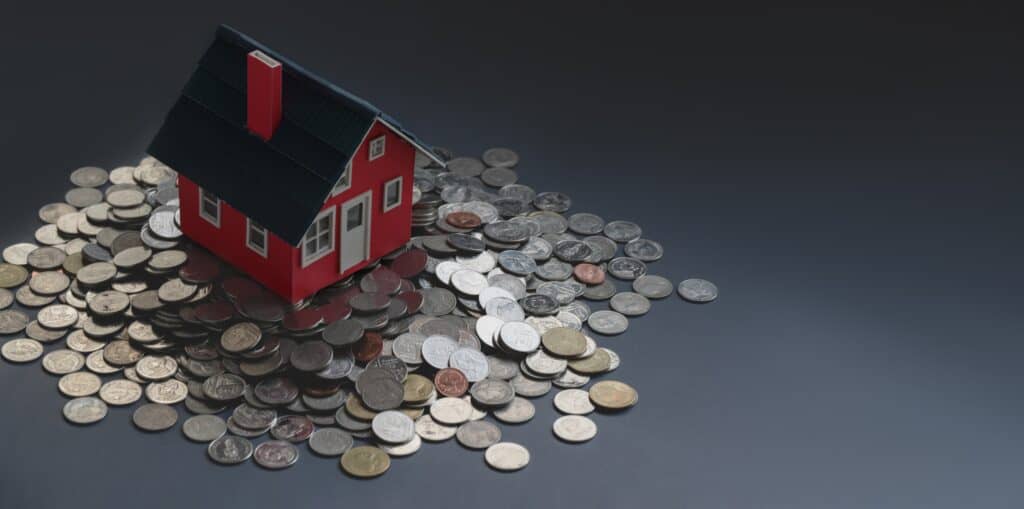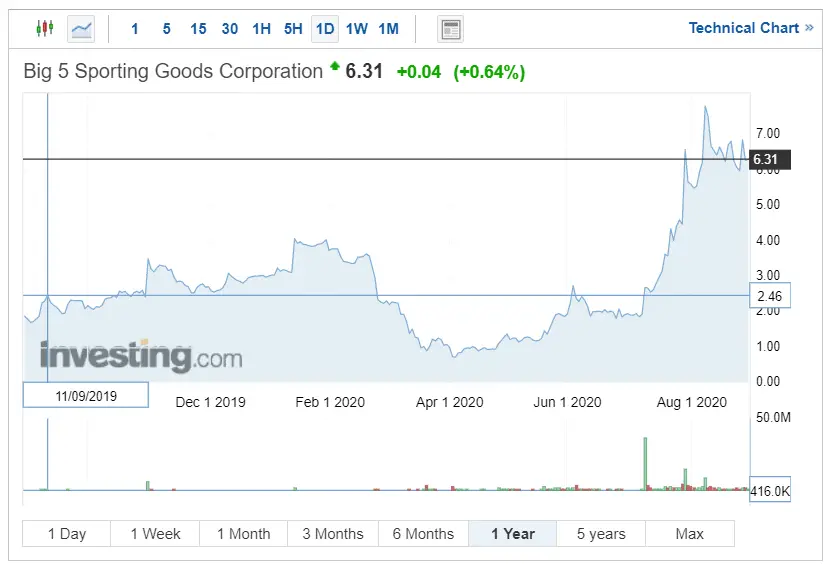
Dividend stock investing has risen a lot in popularity since the great recession. The most popular strategy being dividend growth investing. With everything rising and stocks never seeming to fall the question is: Can you lose money with dividend stocks?
Dividend investing is just like any other form of investing. Once a stock falls in value you will lose your principle investment. Dividend stocks tend to be very stable but a cut in the dividend could send the stock in a downward spiral, potentially losing an investor money.
There are many ways to lesson the chance of a dividend cut affecting your investment. Below I will discuss the various methods of dividend stock investing and how they might lose you money. Also you will learn how to avoid loss.
How Dividend Stocks can Fall in Value
The biggest event that will make a dividend stock fall in value is when the dividend is cut. Many people who invest in dividend stocks rely on this dividend for their income and most people have special rules in place that forces them to sell a stock with the dividend is cut.
Often times this dividend cut has some telltale signs that it may happen here are just a few:
- Payout ratio is above 100%.
- The company has no cash reserves.
- Company is heavily in debt with a major debt repayment on the horizon.
- The company is making no attempts to reduce costs in other ways.
These are all telltale signs that a cut may be on the horizon. Its important to take them in consideration when deciding whether or not to buy a particular stock.
Don’t Lose Money with Dividends
I mentioned above that the easiest way for a stock to tank in price is for them to cut the dividend. Thus an easy way to lose money on a dividend stock. But, oddly enough right after a dividend cut is actually the worst time to sell. In fact you should probably buy more.
The likelihood of a stock of a stock beating the market after a cut is more than 50% according to a study that this seeking alpha article outlines.
https://seekingalpha.com/article/3961103-should-you-buy-company-after-dividend-cut
An Example From My Own Experience
I owned Big 5 Stock. This stock was very bearish because online retailing and Amazon seemed to be taking over the world. I bought this stock knowing that it was going to be rough.
I actually didn’t even imagine that they were going to cut and then eliminate their dividend. But I stuck with it and soon after the elimination of the dividend, the dividend got reinstated a quarter later.
The stock Jumped in price past my buy price and now its doing well. But just take a look at this roller coaster ride.

This just goes to show you that a dividend cut is not a reason to sell without doing more due diligence. If your interested in some of my Big 5 analysis you can check it out on seeking alpha.
Payout Ratio and Company Cash Reserves
While all of the above telltale signs are unique in their own right it can really be summed up in phrase: How much available cash does the company have?
A company can use its cash for a number of different things. One of them paying dividends to its shareholders. This is often the last thing the company wants to do, because it is important to focus on growth.
But, something can be said about companies who pay a dividend, they are just more trustworthy. If a company is consistently paying a dividend then obviously they have cash to payout.
So once a company decides that it does not have anything that can really push the needle and its revenues are growing steadily. Then they can decide to issue a dividend to shareholders to help clear the balance sheets of access cash.
The reason why it is important for companies to do this, is because the cash is much more valuable in shareholder hands to be efficiently used than a a large company.
Payout Ratio Definition
I’ve droned on a lot about cash at this point so now I’ll shift over to the payout ratio and what it actually means.
The payout ratio is simply the percentage of the earnings per share that is being paid out in dividends. The formula is:
Total Dividends / Net income
I was really confused at first, but net income is actually after taxes and expenses have been deducted, so its essentially profit. Gross income is before taxes and expenses.
Just so your not as confused as I was for the longest time.
So if the payout ratio is below 50% than the company is still keeping half of its cash to put towards growing the company. This is a really good for the investor but might slow down the growth prospects of a company. But at least it keeps the company efficient.
High Current Assets but Low Cash
Sometimes a company might seem like it has a really healthy the balance sheet. It has tons of current assets which are likely as good as cash. But the problem is they aren’t. Here are a few examples of current assets that are like cash but something could go very wrong.
- Inventory
- Receivables
When I see either of these in high numbers I get a bit scared. It’s best not to treat them as 100% cash. In fact even Benjamin Graham counted inventory as 50% and receivables as 75%. This is how he came to the conclusion that net current asset value was the best way to value a stock.
This is because the rest of the assets would make up for the shortfall on inventory and receivables.
So when the current assets have a majority of either of these with very little cash you need to be wary when investing in dividend stocks.
Dividend Growth Investing
Dividend growth investing has become very popular over the past 10 years. The problem with it is that it might not be sustainable. People will buy into the hype of a growing dividend and push the stock price up so much that the dividend is paltry.
But, many believe that if they just keep their money in these stocks for the long run they will be find. And they will for the most part except if the dividend gets ahead of itself and earnings start to slump. It’s hard to predict the future so don’t expect that same dividend growth rate to go on forever.
Here is an article a friend of mine wrote on dividend growth investing and how it might trip up investors.
High Dividend Percentages
Some people even believe that high dividend percentages are a sign that a dividend will get cut. However, its not that simple the dividend might just be high because the stock price is significantly reduced in value, but the dividend can still be rock solid.
Some dividends also get special tax breaks for paying out most of their income. So these dividends usually always have a high percentage. The problems begin to arise when revenues and profits begin to fall. This makes it difficult to keep these dividends consistently high.
Many of these stocks are forced to payout what they make rather than extra cash they have on hand. This variably is expected with stocks like and their value is more likely tied to their earnings potential.
Examples of these types of stocks include:
- MLP’s (Master limited partnerships)
- REITS (real estate income trusts)
So when trying to pick a dividend company to invest in to preserve your capital make sure you stay away from MLP’s or REITS. However large funds that include these types of companies can be beneficial as it spreads your risk profile.
Small Cap Dividends Rare but Safe
I have to preface this by stating that not all small caps are safe. There is a slightly higher chance that small caps are frauds vs large caps but its not as great as many tend to believe.
The highest percentage of dividend companies are concentrated in the mid and large cap realm. But that doesn’t mean that small cap companies don’t have dividends either.
In fact they may be some of the safest dividends out there if you know what to look for. For example if the company has a ton of cash reserves and a consistent earnings then you might have found yourself a gem.
To go even further you can get a higher percentage of the dividend pie if you purchase severely undervalued companies like I like to find. These companies are often prices believe book value and even net current asset value.
Unfortunately there aren’t many of them in the United States that’s why I often have to look internationally to find them. Many of these types of companies exist in Japan and I wrote an article about their wonders.
If you aren’t keen on small caps or going internationally then this YouTuber is great to follow as he specializes in large cap dividend growth investing.
The Bottom Line
You can lose money with dividend stocks but with proper strategy and a diversified basket it becomes very difficult. Also I encourage you to look at smaller companies since the larger players have a tough time investing in them, so retail traders have the advantage.
Check back here for more tips and learn how to exploit investing.
